
Mirka Mora, Lisa Gorman and Studio Bright: three titans of art and design collide for Warrnambool exhibition
Share
Studio Bright’s design of the exhibition ‘LISA GORMAN + MIRKA MORA: to breathe with the rhythm of the heart’ at Warrnambool Art Gallery has helped align the work of two pioneering Australian artists whose practices traverse generations and mediums.
Curated by gallery director Aaron Bradbrook, the show in south-west Victoria celebrates the love of colour, illusion, other worldliness and experimental modes of production shared by contemporary fashion designer and artist Lisa Gorman and the late Modernist artist Mirka Mora. It also highlights the pivotal role fashion and textiles have played in their daily lives.
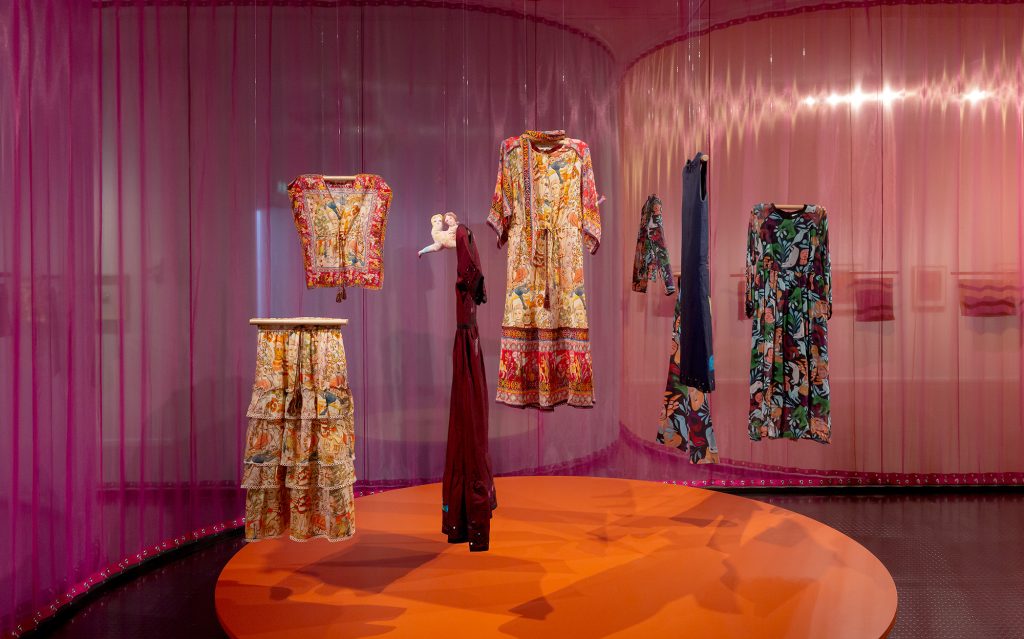
The white cube model of exhibition design
In only the second attempt at exhibition design by Studio Bright, the Melbourne-based architecture practice has thoughtfully married the two bodies of work together, respecting the styles of both artists.
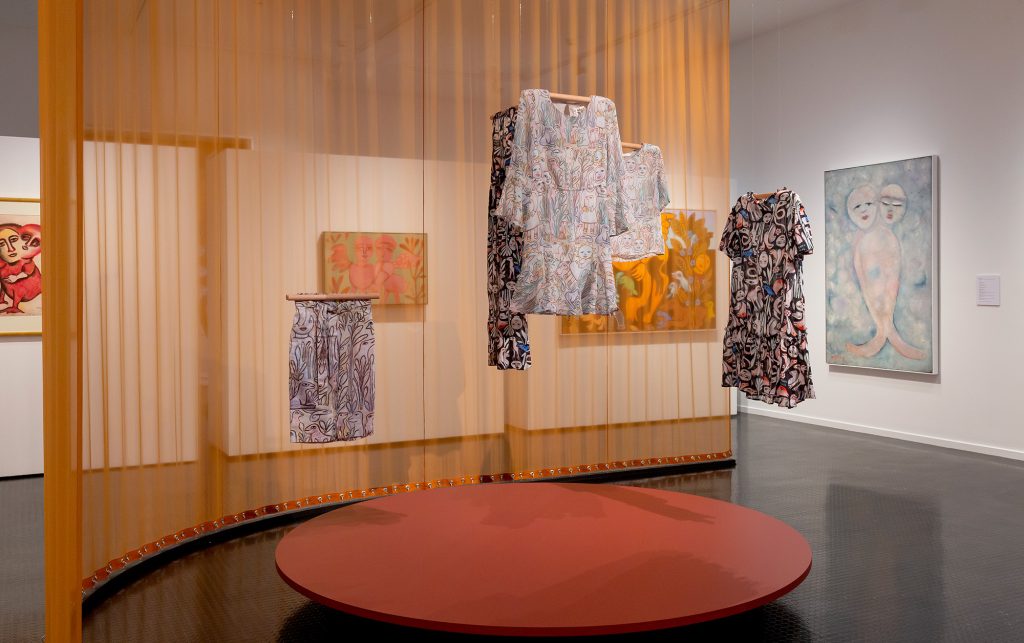
This project follows Studio Bright’s first attempt – the 2023 exhibition ‘Barbara Epworth: In Equilibrium’, which ran at Heide Museum of Modern Art and earned the studio an Interior Design Excellence Award (IDEA) in the Event category.
There are always lessons learned on all projects, says studio director Melissa Bright, and the Barbara Hepworth display – while more complicated and expensive than its follow up – was a “treasure trove of them”.
“The applicable lessons were simple: find out all the display requirements early, find out the likelihood of the artworks changing, leave yourself plenty of time to make changes and for the unexpected,” Bright tells Australian Design Review.
“In terms of design lessons, while there are similar gestures between the two designs, we actually didn’t set out to design another exhibition with curtains, but it naturally evolved in that way given the content.”
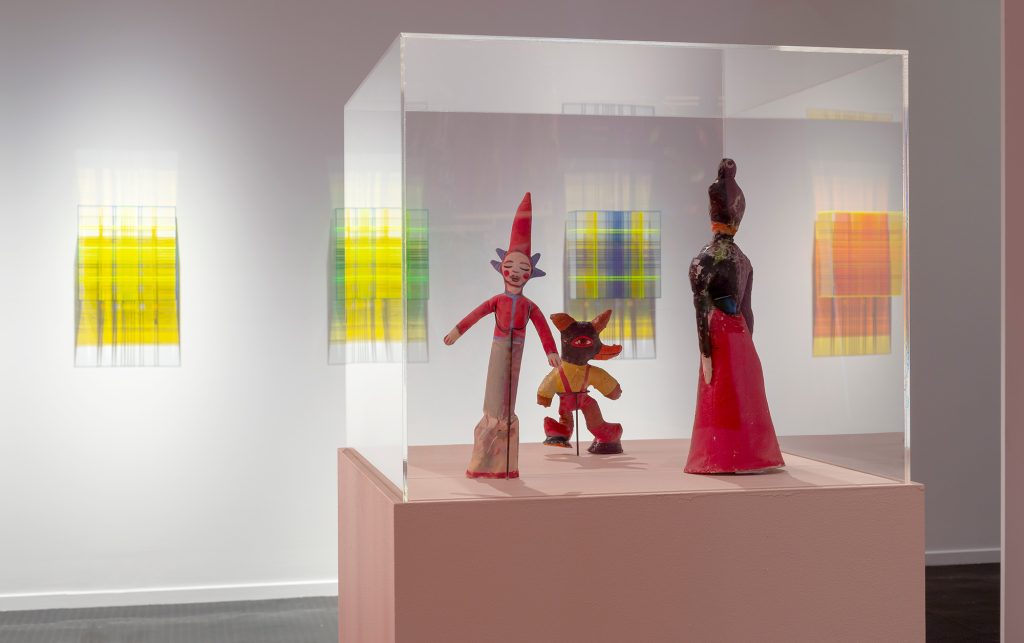
Both the Warrnambool and Heide exhibitions similarly celebrate the artists’ work using rich textures and colours, eschewing the white cube gallery model without distracting from the artwork. Bright has observed many large contemporary galleries moving away from that traditional model, making this an exciting time for her studio and the architecture industry at large.
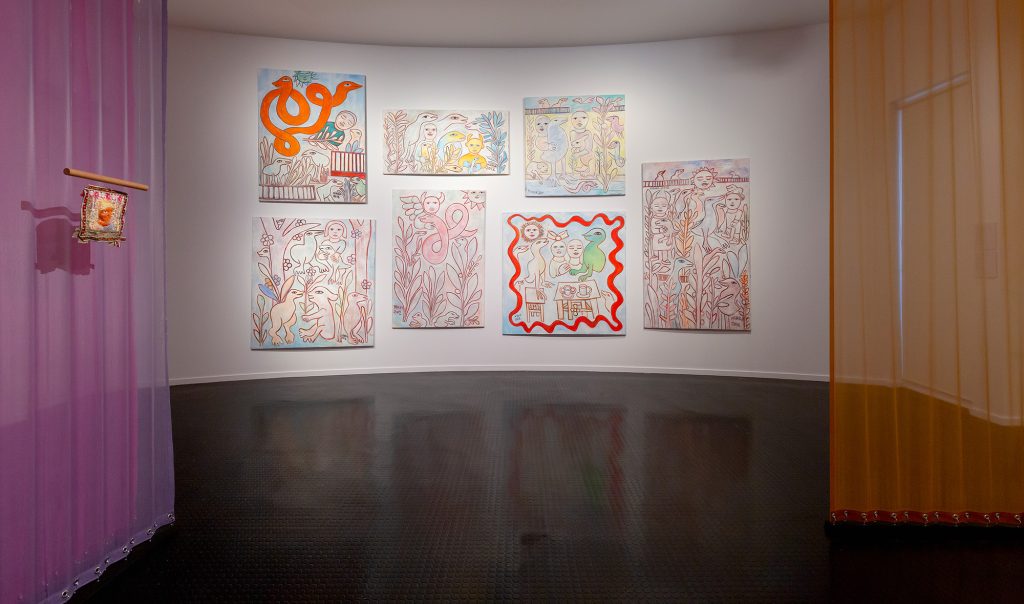
“This has opened the channel between architect and gallery, not only at the monumental or building scale, as we are used to operating, but also at the ephemeral and temporal level,” she says.
Designing LISA GORMAN + MIRKA MORA
According to Studio Bright, the through-line in the work of Lisa Gorman and Mirka Mora, darlings of the Australian art and fashion scenes, is “immediately obvious to anyone who has ever encountered their work”– that of colour, textiles and whimsy.
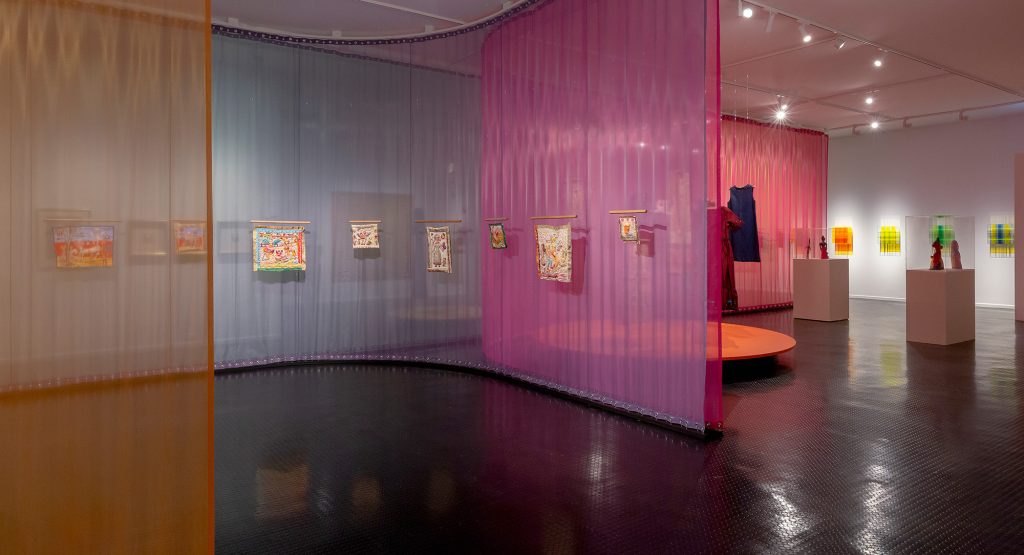
The challenge was to translate this into a legible experience with the different eclectic parts, which spanned paintings, garments, dolls, embroideries and acrylic sculptures, coupled with a modest budget and an existing irregularly shaped room in Warrnambool.
The decision to offset the design from the walls of the gallery is an acknowledgement of site and budgetary constraints. Leaving the walls to undertake the utilitarian task of forming the backdrop to wall-hung pieces, the remainder of the artworks are housed in a series of pleated fabric rooms.
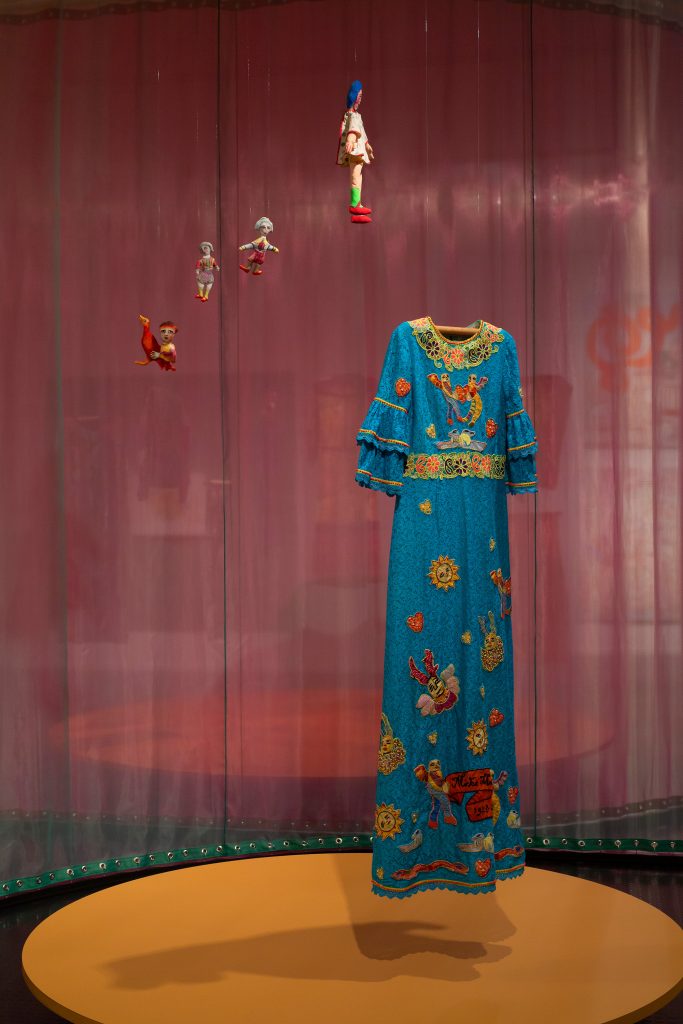
Partitioning the space
The pleated fabric partitions work hard, delineating a spatial, ever-shifting experience, dividing without separating, and dampening sound for moments of quiet contemplation.
The artworks were grouped by medium and broken up into distinct moments with the help of the partitions, encouraging a non-linear and non-heterogeneous way of moving through the space.
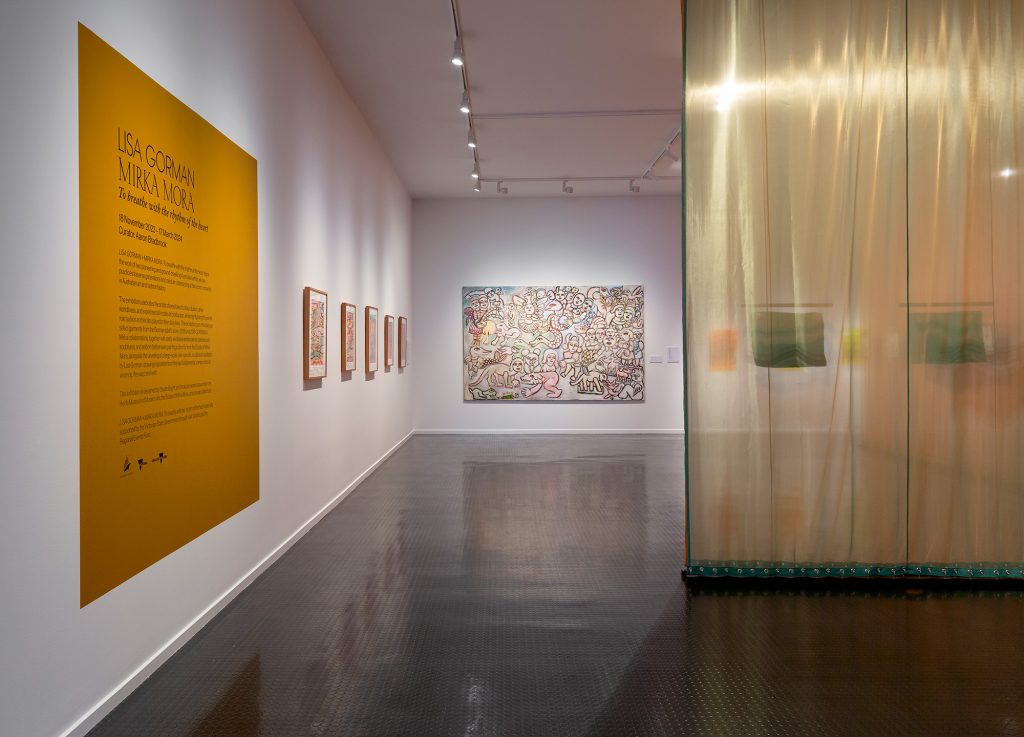
A natural path is set up through the exhibition without being restrictive, allowing the visitor to double back and to meander through the exhibition. Round kick plinths are introduced both to remove the need for protective rope barriers and to visually group a diverse garment collection.
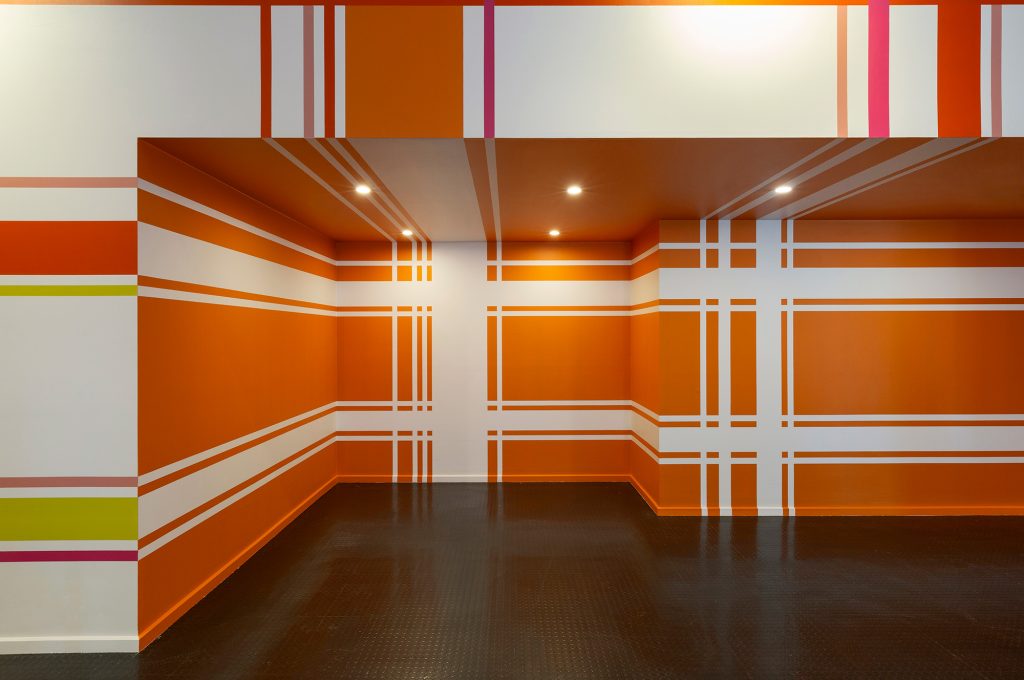
“We want to take visitors on a journey but don’t want to be didactic about it,” Bright explains.
“Everyone comes to the body of an artist’s work at different points in time, especially with Mirka who was a prolific creator during her time. We want to gently lead but not determine a definitive path, which can sometimes happen with larger exhibitions from a more pragmatic wayfinding requirement, but matters less here.”
Studio Bright sought to provide visitors a glimpse into the inner landscape of avid daydreamer Mora and facilitate this same wandering and discovery.
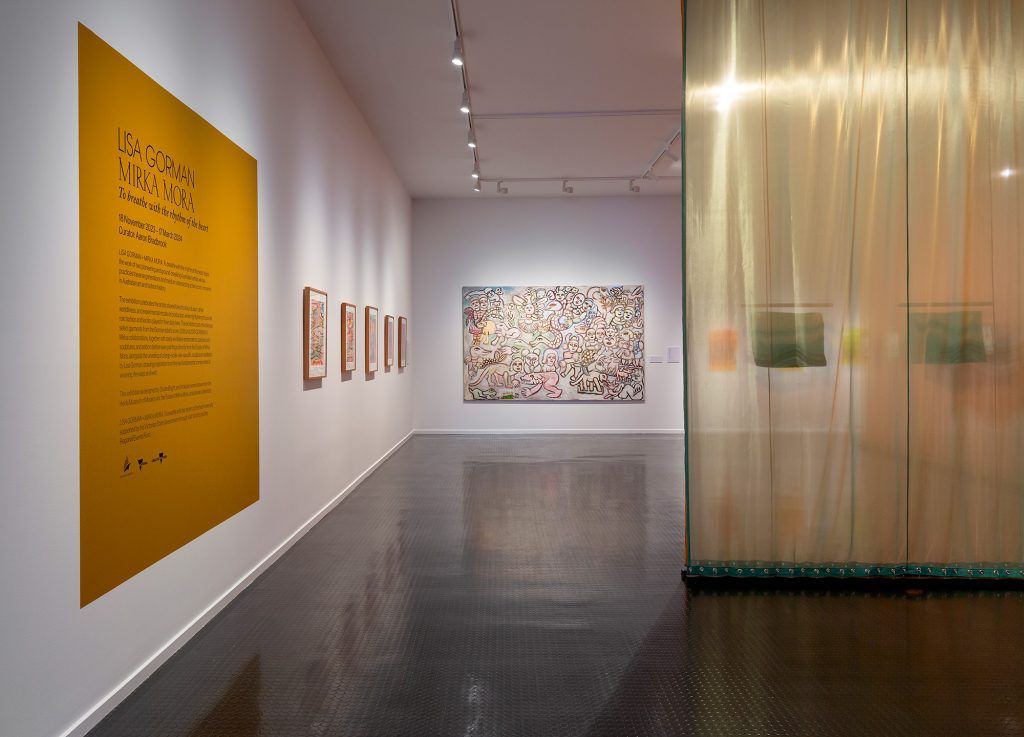
“We love Lisa’s description of the magic of the ‘unknown for what occurs at the junction’ and we hope this is visible at all scales, from the work of the two artists, down to layering of two fabrics,” says Bright.
Warp and weft
Garments are treated like artworks at this exhibition, hung on the same dowels as the embroideries, in lieu of the traditional mannequin. This elevates the garments from retail objects and situates them within Gorman’s artistic journey.
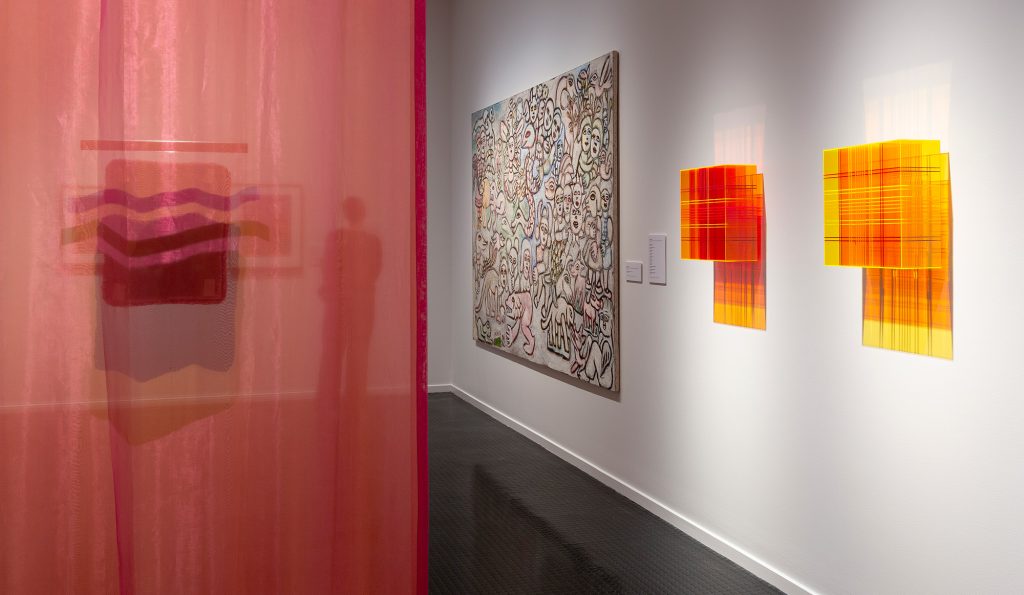
“We also liked the idea that there are distinct moments where you can focus on just one piece of work, without always being contextualised by another artist or thinking about how it fits within the wider body of work. It allows the artwork to breathe and to be fully experienced for itself,” Bright says.
In the front reception is the accompanying interactive room and event space. This has been transformed into an enlarged diagram of the basic unit of weaving: the warp and weft – alternately intersecting vertical and horizontal lines – that is central to Gorman’s work.
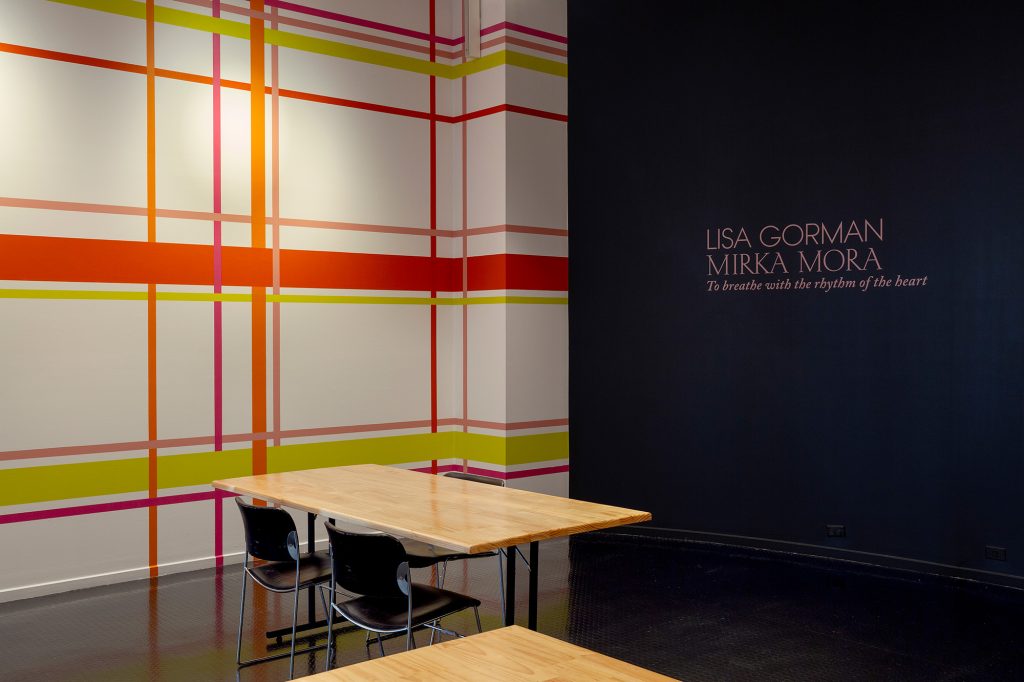
Overall, the project celebrates intersections: between two ground-breaking female artists, between the warp and the weft, between layers of pleated organza, and between architect and contractor.
For Bright Studio, the design and realisation were effortless, and the trades were equally enthusiastic to execute and improve upon the design because they were just as invested as the architects.
LISA GORMAN + MIRKA MORA: to breathe with the rhythm of the heart runs until 17 March 2024. Melissa Bright will reflect upon her international career, alongside the role of architecture in exhibition design at a public lecture at the gallery on 29 February.
Images courtesy of Studio Bright. Christian Capurro, Photographer
















